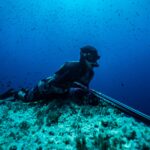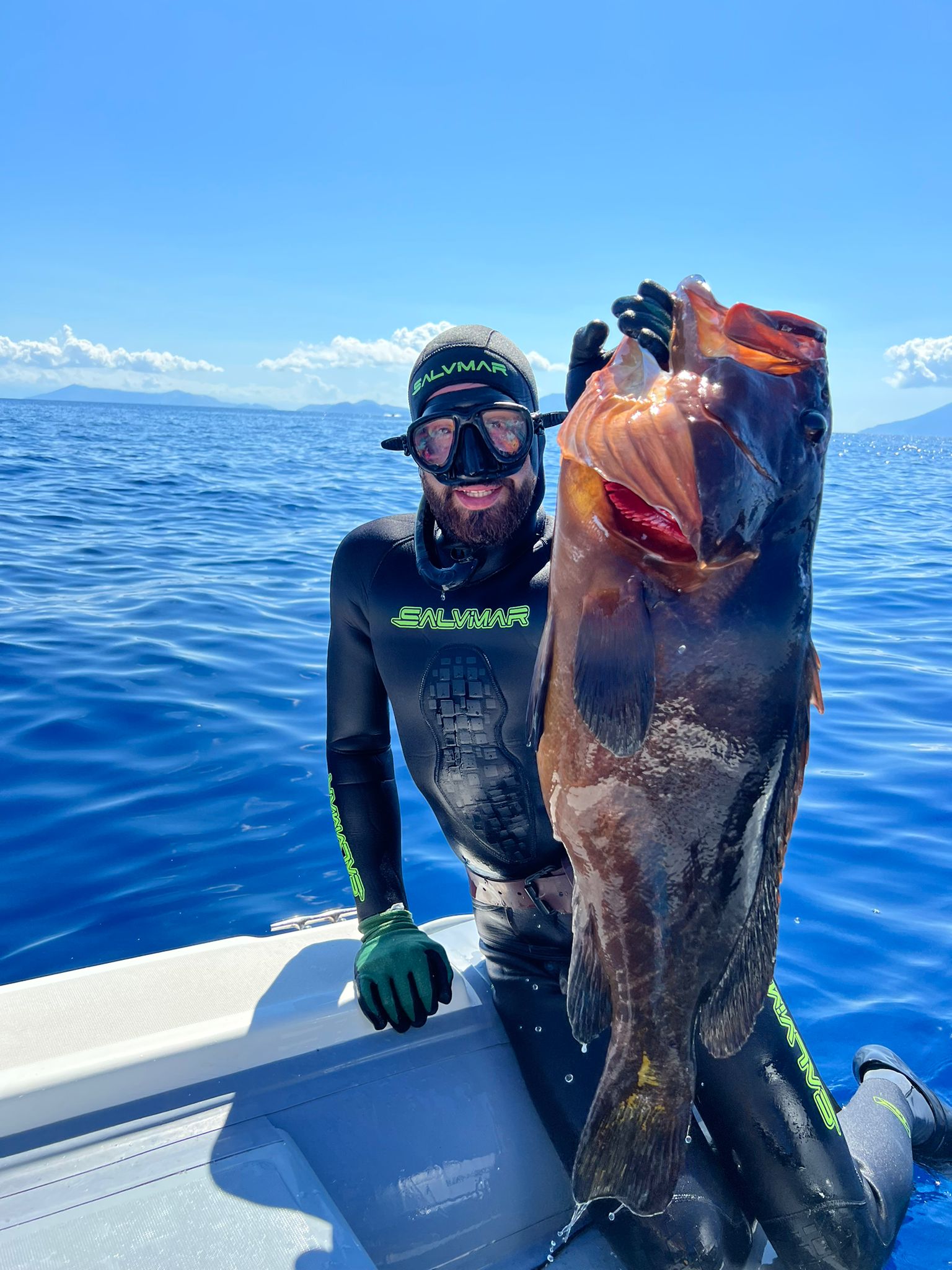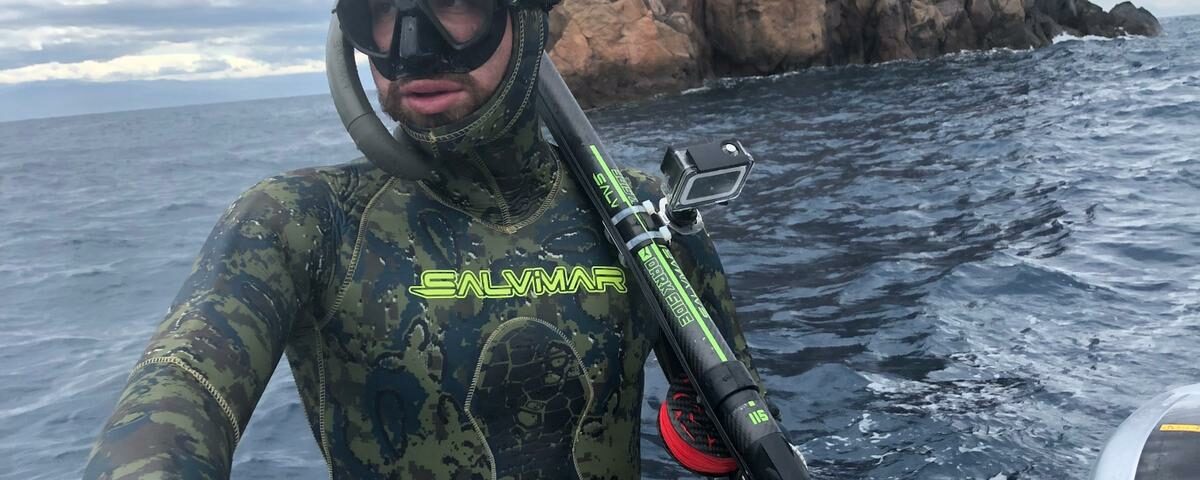Filicudi: Magical and Secret Places… for Everyone

In Scotland, among seals and haddocks!
11 September 2023
Oscar Cervantes joins the team C4/Dessault
22 September 2023They are among the most beautiful seabeds in the entire Mediterranean. Landslides of large rocks that disappear into the abyss in crystal-clear water, where groupers, golden dusky groupers, and large amberjacks reign. Of course, we are talking about challenging areas due to the depths, but where, especially at dawn and sunset, interesting catches are not lacking even at 10 to 15 meters
By Pietro Lanzafame
The charm of the Aeolian Islands is undisputed, and there are very few fishermen who don't dream of deep dives and dream catches in the waters of this volcanic archipelago in the heart of the Mediterranean. While many experienced fishermen often visit these islands and share their adventures, recently "autochthonous" fishermen have begun to emerge, thanks to social media and videos shared through the web, quickly gaining notoriety in the news.
Among these, we find Antonio Li Donni, an Aeolian from Lipari, who has been representing Salvimar for about a year now. Antonio is a big, bearded, and athletic guy who, perhaps because of this or perhaps due to the enormous catches he has accustomed us to seeing on social media, reminds those who have been reading this magazine since the early issues of Riccardo Andreoli and his tales of titanic catches.
Antonio is an athlete of the Cacciatori Subacquei di Messina club, and while he has taken part in some competitions, his fishing philosophy leads him to prefer solo outings, accompanied by a trusted companion, which allows him to fully enjoy the wonders of the Aeolian seabeds outside of the competitive context.
And who better than him could accompany us in the discovery of these seabeds, particularly those of Filicudi? An island characterized by constant large stacked rocks rich in vegetation, which plunge into the blue, often at considerable depths, sometimes starting from bathymetry accessible to all, always populated with life but capable of creating impregnable tunnels through which the most coveted prey can reach an impressive age and size.
We asked Antonio to take us on a typical day in the waters of Filicudi.
"When I plan an outing and decide to head to the most distant islands, the first thing I check is the weather. As we know, we are in the Aeolian Islands, and the wind never lacks here. I schedule my fishing trips based on the period and location. Often, I rely on my sixth sense and the experiences acquired over the years. My favorite period starts in the days between late April and early May when convective currents bring microorganisms such as zooplankton and phytoplankton, triggering the food chain of small fish and, subsequently, predators. The beautiful days warm the surface layer of water, and some species start to come up from the depths. It is during this period that I start fishing in the landslides. The seabeds create real mazes, the perfect habitat for groupers but also for seabream and dusky groupers.
"One of my favorite places, with breathtaking landslides, is precisely Filicudi. An extraordinary place that has given me great emotions in the past. I mainly frequent the stretch of water that starts from Canna di Filicudi and goes up to Monte Nassari. The terrain is similar to a gently sloping plain with huge rocks, which then fall into landslides on the sides of the shoal right into the abyss. Here, the current is constant, and it is often advisable to have a companion to take turns, acting as boatmen for each other and fishing with the flow. I usually fish by ambush, moving along the seabed and circling the large stones in an attempt to surprise the big prey, which are usually hidden in the shade.
"I recommend always having the flashlight ready to use and choosing an easy-to-handle and powerful speargun. In my opinion, the best ones are the air-powered ones, vacuum-sealed, which I have preferred to the long wooden harpoons for some time now.
"Then there is a magical place: the Secca dei sei metri (Six-meter Shoal) - Antonio continues to tell - a summit accessible to everyone, which starts from a base of 45 meters on the sand and rises like a column almost to the surface. Marked on nautical charts, it is located on the northern side of the island, halfway between Scoglio Giafante and Sciara. I often go there at sunset because it is probably the only place where it is possible to encounter big dentex. On the sides, around 15 meters, a plain develops, where encounters with dusky groupers (and golden dusky groupers) are the norm. From here, moving to the side that faces Canna, a very interesting ridge starts, sloping from 24/28 meters to about 36, where you can catch some brown groupers. In this spot, the landslides are often hit by strong currents, and it is never excluded to encounter pelagic fish; it is not for nothing that I have seen more than one tuna. We are indeed far from the coast, with a lot of current and a lot of food, and it is easy for the path of these torpedoes to cross that of the landslide: it has happened to me especially at dawn and at sunset. Apart from tunas, I caught a 8-kilogram dentex and saw a big amberjack of over 30 kilograms stationary on the wall."
As mentioned earlier, always at dawn or sunset, even those who don't dive deep can always make some nice catches, especially in the area facing south, where a very steep wall begins down to 45 meters: even at 15 meters, golden dusky groupers and groupers cross paths. In fact, once, together with Peppino Preiti (our acquaintance and friend of Pescasub&Apnea, editor's note), we had the chance to witness the spectacle of these golden dusky groupers swarming around seven meters. "Finally, a spot that I always reserve to visit at the end of the day is the one at the base of Canna: especially at sunset, it gives incredibly strong emotions."

Any special memories?
"A memory that will remain indelible over time concerns an episode that happened at the foot of Canna. I was with a group of friends when I decided to try a few dives at sunset. The others were laughing and telling me to forget it since it was almost dark. But when I set my mind on something... I start the descent, and even before reaching the bottom, I decide where to position myself and then try an ambush. A large rock serves as a ledge: here it often happens to encounter big groupers and dusky groupers. I was so focused on that rock that I hardly noticed an amberjack coming from the right. The fish was so close that it startled me. Less than a meter from the tip of the spear, I take the shot: the fish starts to run, and the reel starts spinning. The tug-of-war begins. But there's no chance for the prey. After a few minutes of fighting, I manage to embrace the big pelagic: stunning! I resurface, radiant, under the incredulous eyes of my friends."
About Antonio Li Donni
I was born in Lipari, from a family of fishermen. My grandfather, a professional fisherman, used to take me with him on his boat to set the nets. Even though I was very young, I remember being fascinated watching the nets rise from the blue and searching for any glimpse of fish.
My passion for diving began when I first wore a mask given to me by my uncle: I started following him on his outings in shallow waters, looking for octopuses and cuttlefish.
After school, I remember eating just a bite to quickly run to the Pignataro port, where I spent entire afternoons waiting for the fishermen's boats to return. One day, a motorboat returned with two divers on board: I approached them and was fascinated by their equipment, the long fins, and the rubber-powered spearguns.
From that moment, every time I saw them coming, I helped carry their equipment. One day, one of them said to me, "I have a gift for you." He opened the trunk and pulled out a spring-powered speargun, which became my companion for a thousand adventures. And I never stopped putting my head underwater whenever I could.


